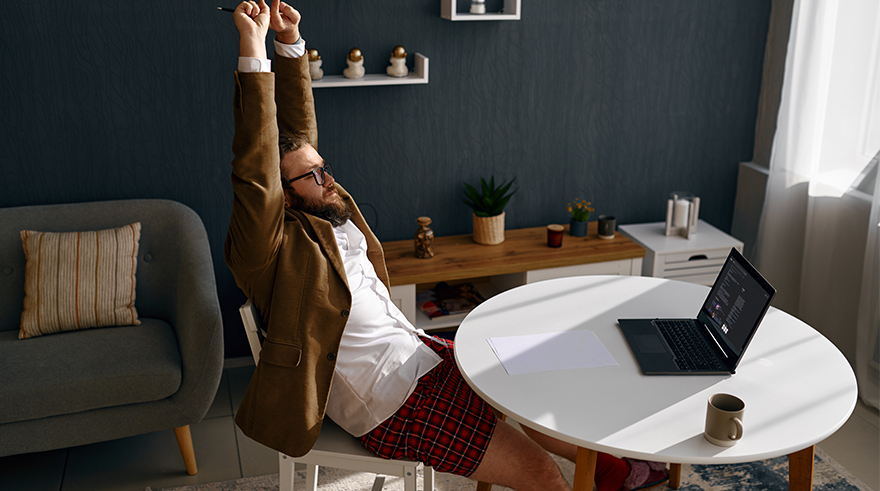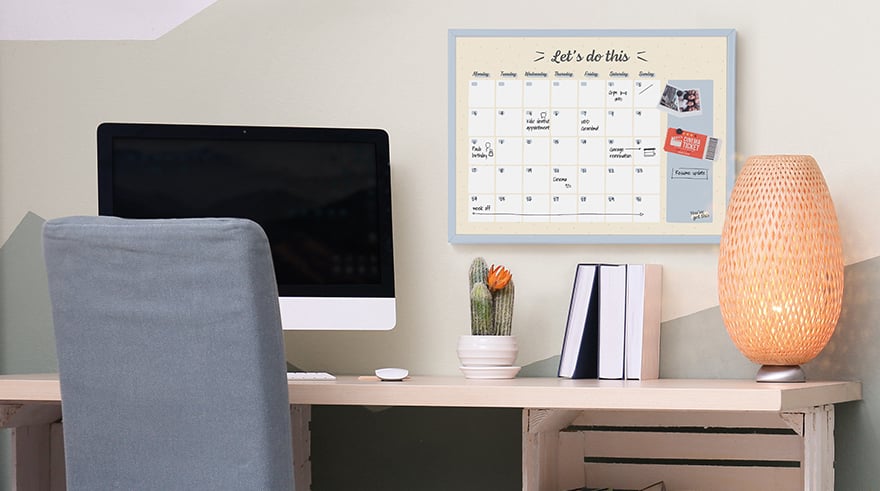Our once separate work and home lives have merged into one homogenous mixture: the "work-life smoothie." When you work from home, the office is inescapable. Bedrooms are transformed into makeshift offices; dining tables and kitchen countertops now serve as cluttered desks.
The line between business time and personal time becomes blurred until you inevitably find yourself answering emails over bowls of cereal or taking meetings with your dog sitting beside you on a bed. The balance between business time and personal time is becoming more unbalanced by the day!
If you work remotely, there are many advantages. People who work from home name the lack of a daily commute and a flexible schedule as enormous benefits to their mental health - these things save time and help with restful sleep.
On the other side of the coin, the disadvantages of working from home are many, but the most obvious one is that it can be difficult for some personalities to delineate between work mode and home mode. This difficulty becomes worse if both modes take place in the same physical space. Also, remote workers tend to take fewer and shorter breaks than office-based counterparts and end up working longer hours.

Having less time working late gives back more energy for physical exercise, meditation, meal preparation- all things that are incorporated with a healthy lifestyle. With fewer distractions during the evening because of no work-related activities on your mind, cooking at home becomes possible instead of relying on takeout meals which are unhealthy by default due to their high sodium content.
Exercise is essential to the well-being of our bodies, but it also has an exponential effect on our physical and mental health. It is important to set time aside in your schedule for a gym session or a couple of laps around the park. And when you are setting your daily tasks, remember to factor in your personal life.
Set boundaries and adopt healthy habits
Technology has made remote work possible. The challenge is that you have to figure out when, where, and how to set boundaries. Many remote workers, especially those who work from home, face questions about career development, training opportunities, and office equipment. They need to deal with these issues and others.
Humans are creatures of habit. This is true at home and work too. To master a balance between your job and everything else in life is important so you can have mental peace as well as emotional stability. You must separate working hours from leisure time. Here are 5 healthy practices to adopt when you work from home:
- Set boundaries between home and work-life
- Be sure to only check your email while you're at work, not after
- Switch off notifications on work devices at night
- Schedule meetings and phone calls for one part of the day
- Don't use your personal phone or laptop for work

Manage your time effectively by planning ahead
We've established that working from home can be great but also has its challenges. It is important to stay on top of the hours you work and how you spend your time. Self-tracking offers you a chance to see where you are more productive, and where you find yourself wasting your time. To-do lists can help you keep track of your progress and get things done.
Then, you can plan your day by picking which tasks to complete first. Basically, the most important tasks should be your highest priority and should be done as soon as possible. If you're struggling with prioritising, it's best to start with the most difficult task first.
When you're in the middle of a big project and you're feeling overwhelmed, take a break. Make lists of the tasks that lead to your goal and check them off when you accomplish them. This helps you stay focused and ensures that you're making progress. It also gives you a sense of accomplishment when you cross items off your list, so it seems doable.
In the office, a Kanban planner board is a lifesaver. It’s great for keeping track of tasks and team statuses. As team meetings tend to have a reduced number of attendees, small office meetings will happen more often- which makes a small whiteboard or easel a must-have product for your team's creativity and presentations.
At home, you can use a planner for various purposes. For example, you can use it to plan your week or month. If you colour-code your planners with 3 columns, you can list work-related tasks, personal time-related tasks, and even household-related tasks.

There are a lot of distractions in today's world. A planner helps you stay on top of your tasks and appointments by providing the space to keep track of all this information. All you have to do is write it down, and your personalised planner will remind you about what needs to be done at what time. It also keeps track of your meetings, deadlines, and appointments. This way, you can focus your mental energy on more important things.
Another way to keep tabs on your work is by maintaining your availability for meetings and other commitments on the planner. This way, you’re able to set up meetings with colleagues and family members, and they know when you are available.
Working from home can be a blessing. In the most basic sense, you cut down on time spent commuting and have more time with family. And just because you work from home doesn’t mean you have to sacrifice your productivity and well-being.
Put these tips into practice and thrive in your new routine!


.png)